– HELP ME, HELP, HELP….
Maria das Dores Bernardes, butcher´s daughter, Bernardo, screamed at the top of her lungs, that her house was on fire and distressed, asking for help from her neighbors, who half-walled , lived with her in other wooden houses in Ribeira do Porto.
The neighbors did what they could with a buckets of water and little else, because there was nothing more to do …
Screams of terror and cries of women were heard, crying out for divine intervention …
It took a few hours for everything to be destroyed and the few goods consumed by the fire.
This story of pure fiction, would have been a situation that would surely have occurred several times in the early years of the 19th century in the city of Porto, where a small fire created chaos in the city and there was no one to help the fires that consumed the small houses. It was necessary to take measures so that these fires did not further aggravate the difficult situation of those who, with very little, managed to survive and fires were the worst of all evils.
There were no firefighters, nor fire-fighting cars, and in the absence of electricity (only invented many years later), only candles and lamps illuminated houses at night, increasing the risk of fires, particularly in the closed urban centers.
The scare was permanent and the risks increased, because the population was increasing – they came from the interior, from Minho and from all regions of the country looking for better living conditions which the new industries of the industrial revolution brought to all these people.
The small houses became more and more crowded and the risk increased.
Something had to be done quickly…
It was there that, by agreement between the representatives of the different masters of the city, the City Council and the Cabido, an innovative solution was sought to calm the populations and reduce the risks of fire.
Eureka! Finally a solution…Everyone was called to go to a fire, wherever part of the city was – everyone would be a volunteer.
A contraption was designed, a “device” capable of warning everyone that there was a fire so that everyone could come to the rescue.
 FIRE ALARM SYSTEM
FIRE ALARM SYSTEM
Stored inside an iron box, a lever pulled a protected rope inside an iron pipe that would ring the bell of the Church high up there giving a number of rings on the bell announcing the place of fire, so that the whole population would know where to go to help those in need.
A uniform regulation was created throughout the City and depending on the number of times the Church bell rang, anyone who could go to that place would go. For this purpose, a table was created of the number of chimes that the bell would ring, where the fire would occur according to the places.
So, if the fire occurred in the Sé area, the bell would ring 4 chimes and so on. As soon as the bell rang 3 times, the alarm signalled that the situation was under control and everything could return to normal. This system was then set up in various churches in the 50s, in the 19th century, located at strategic points of the city, and it worked well.
Only years later, in 1875 the Associação dos Bombeiros Voluntários was founded in Porto by a group of influential people in the City, merchants and industrialists who, concerned with safeguarding their goods, decided to put their hands to work, and create the best conditions so that in case of fire the firemen could put out the fires. So, no wonder that influential people in the City and with financial capacity to organize an Associação dos Bombeiros Voluntários had been essential to set in motion an organization that would defend everyone from that common enemy – the fire!
Names such as Alexandre Theodoro Glama, Hugo Kopke, Walter Kendall, Alexander Miller Fleming, were essential in the realization of this need increasingly felt in Porto, installing its first headquarter in Rua do Bonjardim.
Specific wheelbarrows were built with water pumps that were carried in barrels and that could calm the anger of the blazes.
In 1876, the publication “O Bombeiro Portuguez” (The Portuguese Fireman) was created to publicize the activity of the Voluntary Firefighters, which was a fortnightly leaf, where the creation of other machines and techniques for fighting fires was taken into account, as well as other news.
Since it was necessary to increase the number of volunteers, in 1872, notices were placed in the City’s commercial houses for recruitment to make themselves available for this noble and altruistic function.
 And here comes the registration as a volunteer of a young man of 19 years, born in Brazil in 1850 from a wealthy family who settled in Porto.
And here comes the registration as a volunteer of a young man of 19 years, born in Brazil in 1850 from a wealthy family who settled in Porto.
Guilherme Gomes Fernandes, developed a remarkable evolution in the creation of conditions for the Voluntary Firemen of Porto until his death in 1902 in Lisbon, following a septicaemia after a surgery.
He is honoured in a square that carries his name (ancient Santa Teresa Square), where a bust keeps his memory forever.
Well…
As for the “contraptions” they no longer have any reason to exist and to fulfil their role, rusting and almost lost forever, and I say almost, because fortunately, some have been recovered recently and put into operation as at the time they were created, such as the one on the façade of S. Lourenço Church, in the Cathedral, among other cases which it is pleasing to note and continue to protect because they are already part of the history of the City.
Today they no longer play their role of fire alarm, but keep alive the memories of the city that are always worth preserving.
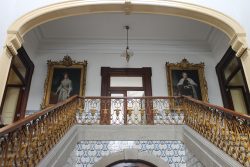 Here we find the Materials Bank, an innovative project that promotes the safeguarding of materials that characterise the city’s image, collecting them from dilapidated buildings to be demolished or altered.
Here we find the Materials Bank, an innovative project that promotes the safeguarding of materials that characterise the city’s image, collecting them from dilapidated buildings to be demolished or altered.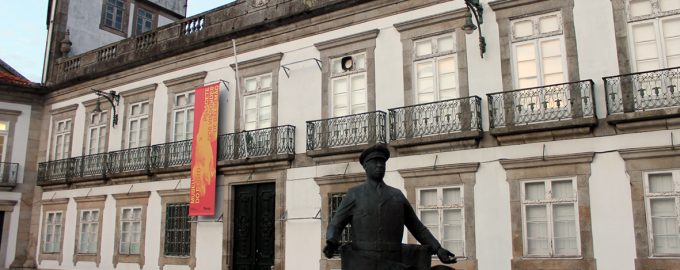
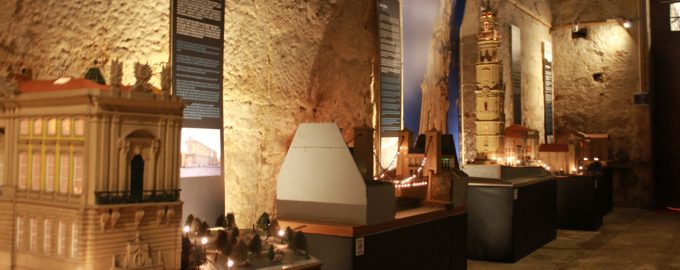
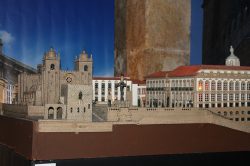 ‘Porto em Miniatura is a unique exhibition that recreates Porto’s most emblematic monuments on a reduced scale.
‘Porto em Miniatura is a unique exhibition that recreates Porto’s most emblematic monuments on a reduced scale.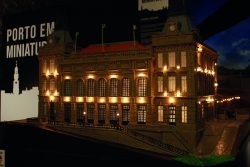 Born in Porto on 11 August 1923, Agostinho Conceição Gonçalves Teixeira left a remarkable legacy as the guardian of his hometown’s historical and architectural memory.
Born in Porto on 11 August 1923, Agostinho Conceição Gonçalves Teixeira left a remarkable legacy as the guardian of his hometown’s historical and architectural memory.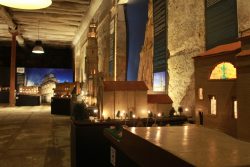
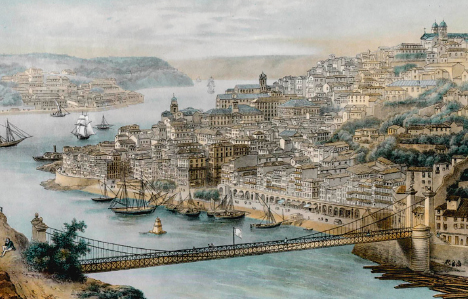
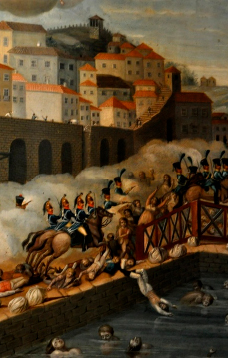 It was only in 1369 that a walkway was inaugurated consisting of boats, an iron chain that joined them and a wooden platform on which people walked.
It was only in 1369 that a walkway was inaugurated consisting of boats, an iron chain that joined them and a wooden platform on which people walked.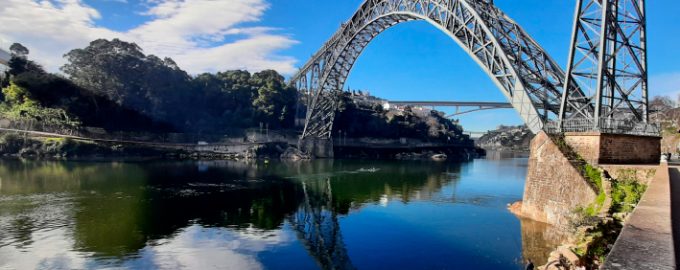
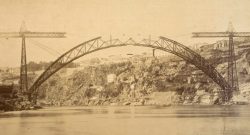 It marked the arrival of the railway to the city of Porto, and the connection between Porto and the south at the railway level was its function. It made it possible to complete the railway connection between Porto and Lisbon which, at the time, ended at Devesas station in Vila Nova de Gaia. It had a profound impact on the economy of the region, as the city of Porto became the hub of a set of important railway lines and allowed the reordering of the urban fabric according to the location of the stations.
It marked the arrival of the railway to the city of Porto, and the connection between Porto and the south at the railway level was its function. It made it possible to complete the railway connection between Porto and Lisbon which, at the time, ended at Devesas station in Vila Nova de Gaia. It had a profound impact on the economy of the region, as the city of Porto became the hub of a set of important railway lines and allowed the reordering of the urban fabric according to the location of the stations.
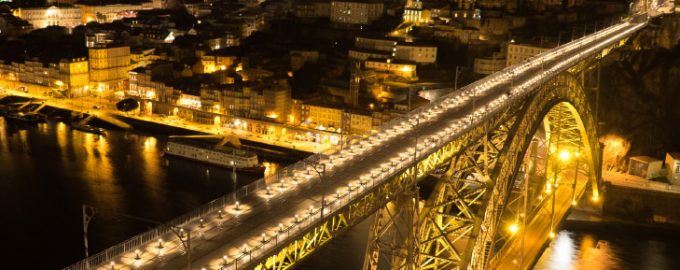
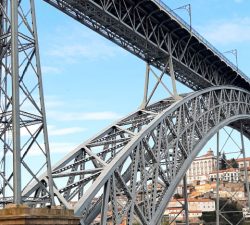 This bridge innovated at the time by having two platforms that took into account the two different elevations of the cities. The upper level is 395 metres long, and the lower level 174 metres.
This bridge innovated at the time by having two platforms that took into account the two different elevations of the cities. The upper level is 395 metres long, and the lower level 174 metres.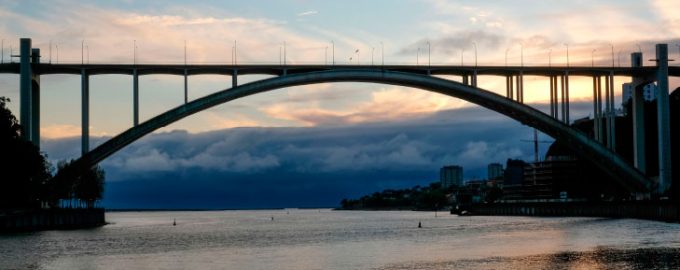
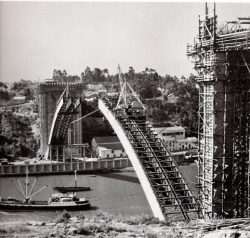 The Arrábida Bridge is an internationally recognised masterpiece of bridge engineering.
The Arrábida Bridge is an internationally recognised masterpiece of bridge engineering.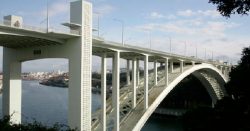 Of the various bridges over the Douro River estuary, the Arrábida Bridge is the closest to the estuary.
Of the various bridges over the Douro River estuary, the Arrábida Bridge is the closest to the estuary.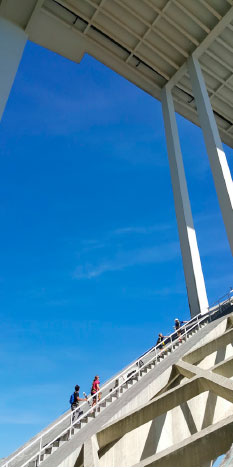 Did you Know?
Did you Know?
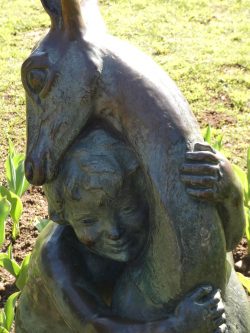 Tenderness Sculpture by Henrique Moreira
Tenderness Sculpture by Henrique Moreira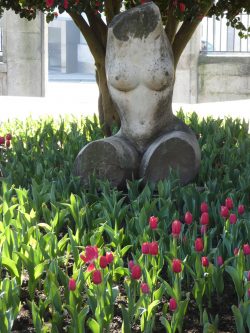

 FIRE ALARM SYSTEM
FIRE ALARM SYSTEM And here comes the registration as a volunteer of a young man of 19 years, born in Brazil in 1850 from a wealthy family who settled in Porto.
And here comes the registration as a volunteer of a young man of 19 years, born in Brazil in 1850 from a wealthy family who settled in Porto.
 António Pereira Nobre Portuguese poet, born in Porto on August 16, 1867, at Rua de Santa Catarina, 467-469. Son of wealthy bourgeois, he lived his childhood and adolescence between Leça da Palmeira, Foz do Douro, Póvoa de Varzim, Lixa or Seixo.
António Pereira Nobre Portuguese poet, born in Porto on August 16, 1867, at Rua de Santa Catarina, 467-469. Son of wealthy bourgeois, he lived his childhood and adolescence between Leça da Palmeira, Foz do Douro, Póvoa de Varzim, Lixa or Seixo. A victim of pulmonary tuberculosis, he died in Foz do Douro, on March 18, 1900, at the age of 32, at the home of his brother Augusto Nobre, a renowned biologist and professor at the University of Porto.
A victim of pulmonary tuberculosis, he died in Foz do Douro, on March 18, 1900, at the age of 32, at the home of his brother Augusto Nobre, a renowned biologist and professor at the University of Porto.
